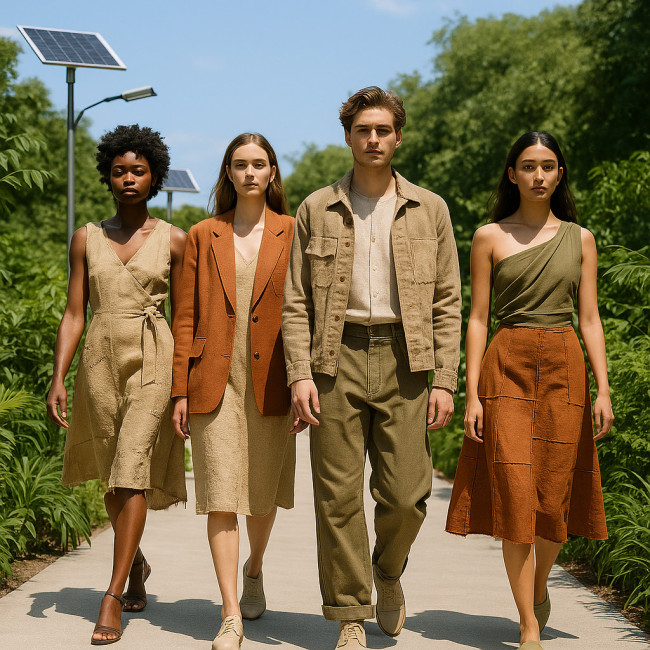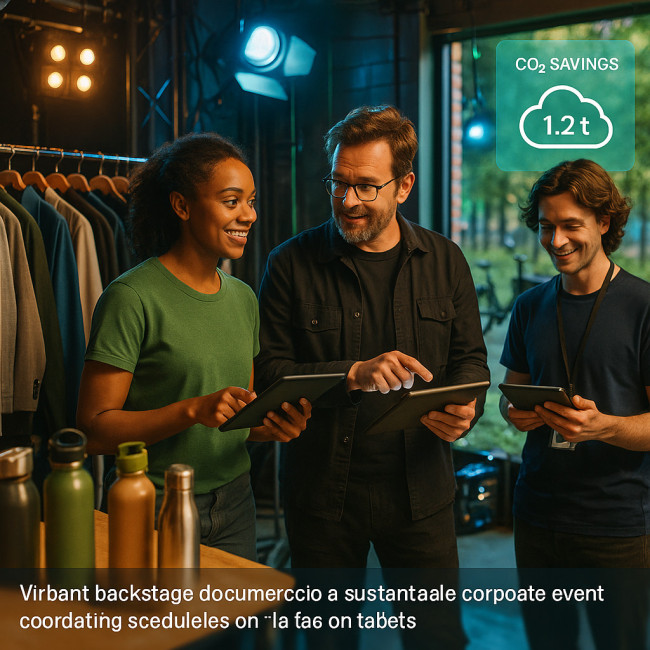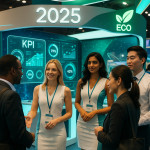Sustainable events: partnering with eco-conscious models and agencies
Looking to cut the carbon footprint of your next showcase without sacrificing wow-factor? Discover how to source eco-conscious models and partner with agencies that share your sustainability goals. This guide covers vetting criteria, low-carbon logistics, cost myths, impact metrics and more, so your event shines for guests — and the planet.
Why sustainable talent sourcing matters

For many planners, switching to local talent feels like a tiny lever, yet the ripple effect is huge: fewer visa forms, shorter hotel stays, less rush shipping of wardrobe, and a clearer conscience when the lights go down. Imagine welcoming guests to a show where every face on stage lives within a two-hour rail radius: travel diaries look more like weekend commutes than red-eye odysseys, and the savings stack up fast, proving that glamour and responsibility can walk the same catwalk without missing a beat.
Live events can generate heavy emissions through travel, fast fashion wardrobe, single-use catering and wasteful set builds. Flying in talent from multiple countries alone can account for up to 70 % of total production emissions. By choosing eco-conscious models, you:
- Slash long-haul travel and accommodation CO2e
- Signal brand values to increasingly climate-aware audiences
- Unlock press angles that broaden event coverage
- Stay ahead of tightening corporate ESG reporting rules
Source : AdGreen Carbon Calculator
How to identify eco-conscious models & agencies
Key certifications and proof points
Ask for third-party validation, not marketing fluff. Leading agencies display:
- B Corp™ status — evidence they meet rigorous social and environmental standards.
- AdGreen registration for transparent production carbon tracking.
- ISO 20121 compliant event management processes.
- Publicly available sustainability reports updated yearly.
Green working practices to look for
- Local-first rosters. Talent databases filtered by radius, cutting air miles. The event model roster on Artfolio lets planners toggle “public-transport ready” to surface nearby professionals.
- Wardrobe reuse. Agencies that maintain a shared clothing archive or partner with rental platforms.
- Digital paperwork. E-contracts, e-call sheets and cloud mood boards replace printouts.
- Fair labour clauses. Eco practice must still guarantee living wages and diversity.
Need a deeper checklist? Our guide on eco-friendly model bookings breaks down interview questions and audit tips.
Building a low-carbon event workflow

Think of a low-carbon workflow as a relay race in which every hand-off trims a gram of CO2 rather than adding weight. The brief sets the pace, the shortlist keeps mileage lean, and the call sheet choreographs people and props so nothing double-backs across town. Done right, trucks are swapped for cargo bikes, remote fittings replace jet-lagged rehearsals, and the wrap party is powered by the same LED rigs that lit the catwalk — proof that efficiency can feel effortless when sustainability is baked into every step.
1 – Brief your sustainability goals
State measurable targets in the creative brief: “Reduce model travel emissions by 60 % versus our 2023 event.” Clear KPIs nudge every supplier toward greener solutions.
2 – Shortlist with advanced filters
Tools like swipe-to-compare directories make it simple. Use location radius, sustainable credentials and inclusive sizing data to assemble a shortlist in minutes. For step-by-step tactics, read shortlisting models online.
3 – Book and coordinate efficiently
- Batch travel. Group call times to avoid multiple trips.
- Hybrid rehearsals. Run fittings via video when poses can be blocked remotely.
- Shared riders. Consolidate catering and wardrobe requests.
4 – Measure impact post-event
Feed travel logs and accommodation data into the AdGreen calculator. Publicise savings in your ESG report and marketing materials.
Cost vs impact: myth-busting table
| Concern | Reality | Action tip |
|---|---|---|
| “Local talent costs more.” | Average day rates vary < 5 % vs imported talent once travel is removed. | Negotiate package fees & highlight the carbon dividend. |
| “Green wardrobe looks dull.” | Rental houses stock designer pieces, refreshed monthly. | Allocate styling time early to secure standout looks. |
| “Reporting is complex.” | Free calculators convert receipts into CO2e instantly. | Assign one team member as data gatekeeper. |
Success metrics & reporting
The most persuasive reports mix hard numbers with human stories. Track:
- Total travel emissions vs baseline year
- Percentage of wardrobe items rented or reused
- Diversity statistics across body types, age and ability
- Audience sentiment: survey guests on perceived brand responsibility
- ROI uplift: correlate sustainability comms with ticket or sponsor sales (see detailed ROI framework)
Quick self-test: are your sourcing habits green?
FAQ
- Do eco-conscious models restrict creative wardrobe choices?
- No. Many models collaborate with rental houses and sustainable designers, giving you broader, not narrower, style options.
- How early should I book local models to secure availability?
- Four to six weeks is ideal. Eco-focused talent is in high demand, so lock dates once your venue is confirmed.
- What if my brief requires international faces for brand relevance?
- Consider diverse local communities first. If flight is unavoidable, offset emissions and extend booking length to maximise content per trip.
- Can small events afford sustainability auditing tools?
- Yes. AdGreen and several agencies provide free calculators and templates.
- How do I communicate our green efforts to attendees?
- Share a one-page impact statement on screens, in programmes and on social, highlighting travel savings and wardrobe reuse stats.











